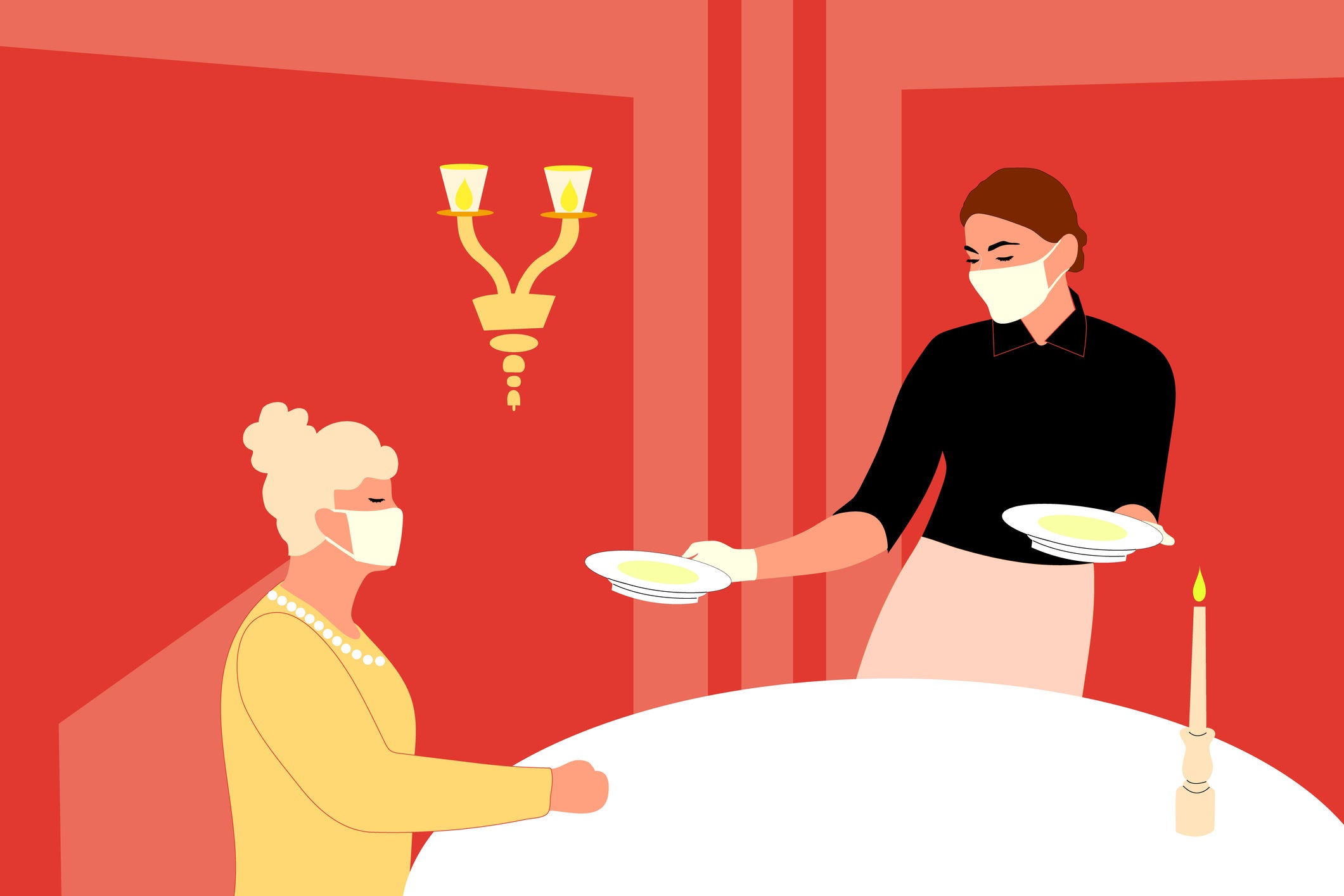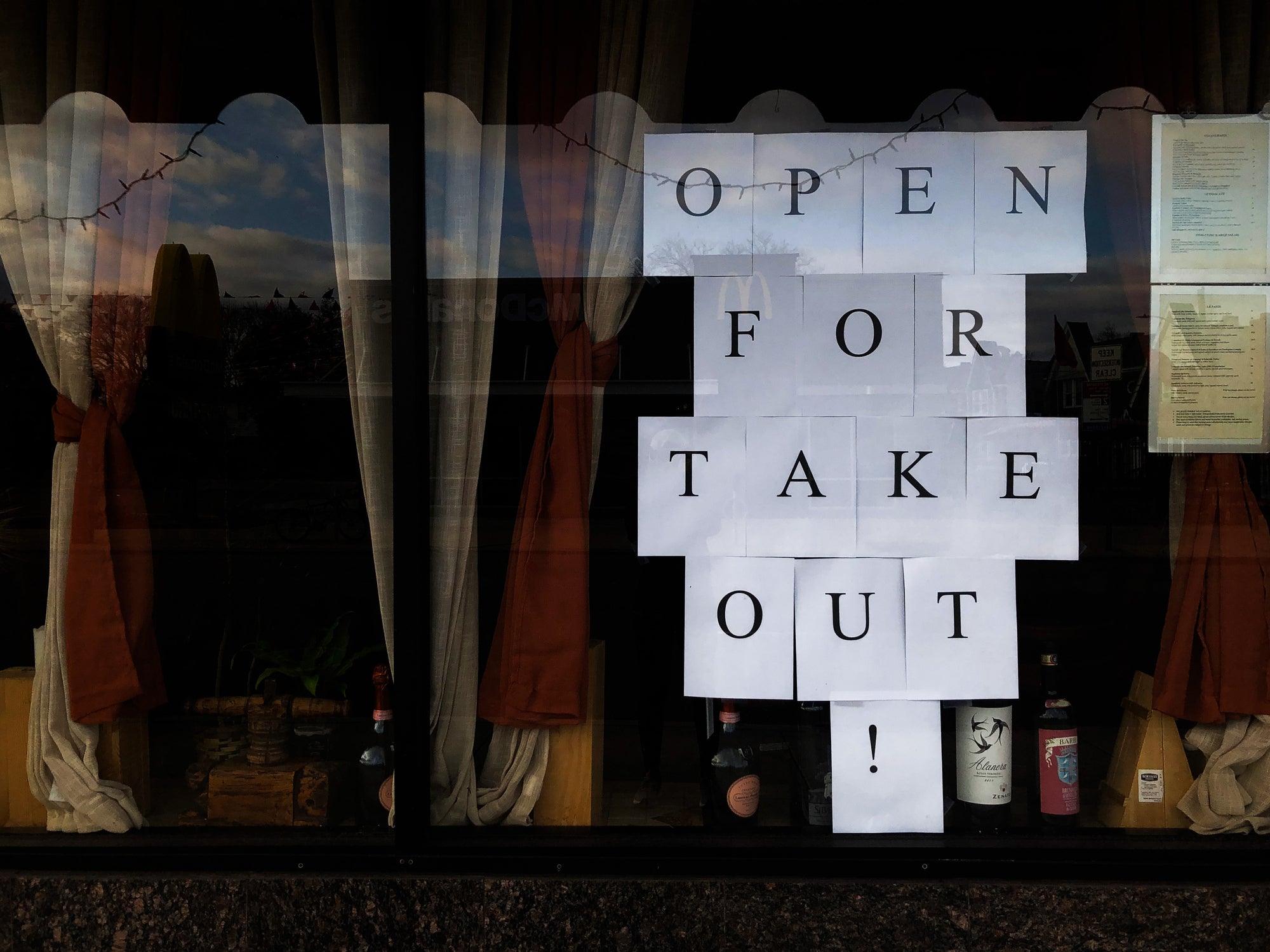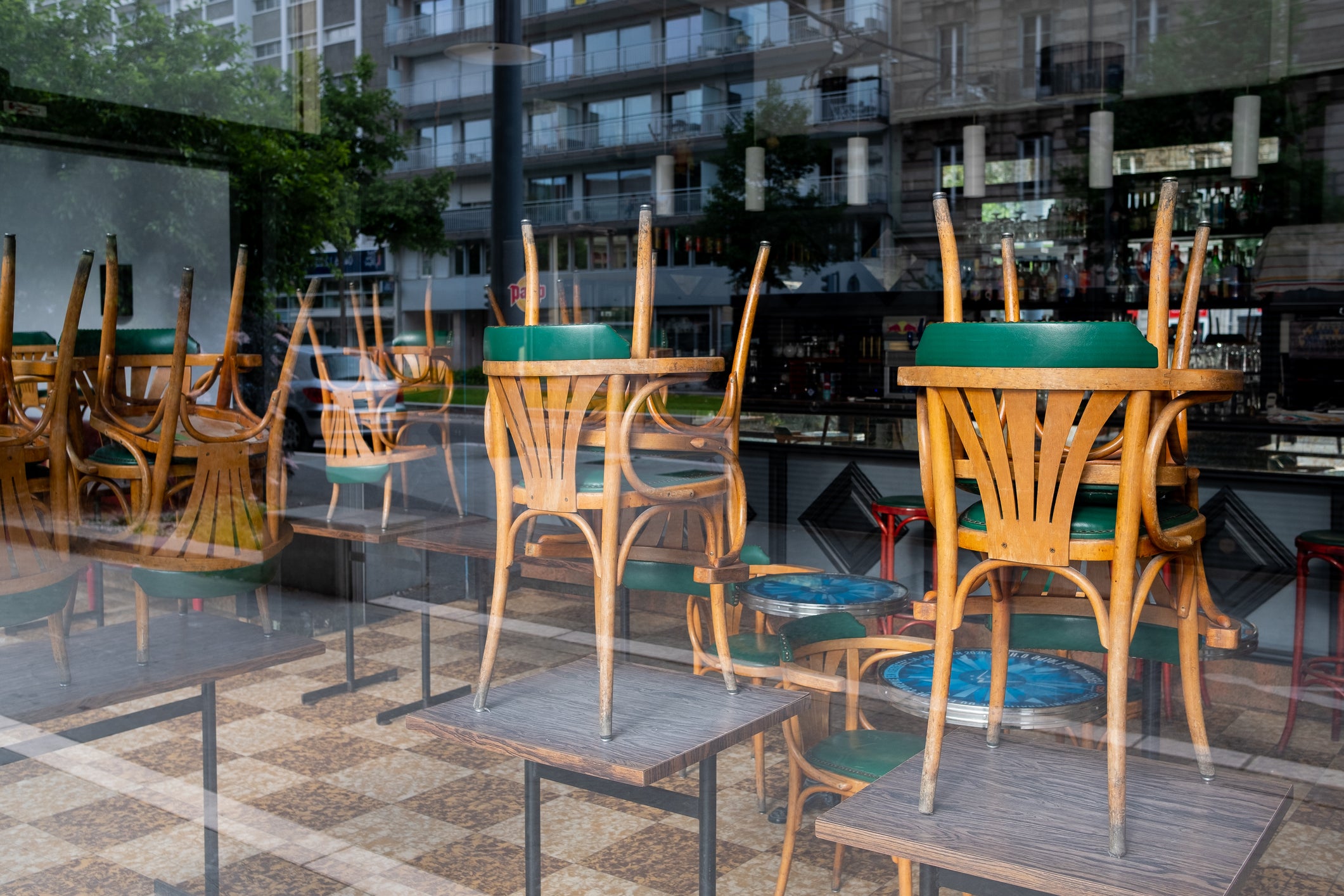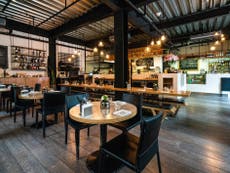Takeaways, social bubbles and broken dreams: The restaurants that have never known normal
The hospitality industry has spent a year adapting to ever-changing coronavirus rules. But while many restaurants have shuttered, others have launched into a landscape like no other, writes Kieran Morris

Your support helps us to tell the story
From reproductive rights to climate change to Big Tech, The Independent is on the ground when the story is developing. Whether it's investigating the financials of Elon Musk's pro-Trump PAC or producing our latest documentary, 'The A Word', which shines a light on the American women fighting for reproductive rights, we know how important it is to parse out the facts from the messaging.
At such a critical moment in US history, we need reporters on the ground. Your donation allows us to keep sending journalists to speak to both sides of the story.
The Independent is trusted by Americans across the entire political spectrum. And unlike many other quality news outlets, we choose not to lock Americans out of our reporting and analysis with paywalls. We believe quality journalism should be available to everyone, paid for by those who can afford it.
Your support makes all the difference.Santiago Lastra spent three years designing his dream restaurant. The chef, who earnt his stripes at Copenhagen’s world-famous Noma, had been tipped to open one of 2020’s most exciting launches. And then the virus took hold. “It was devastating,” he tells me over the phone from Yucatan in Mexico, where he has been since December. “Everything was put at risk. I had taken so much time trying to plan for every eventuality – but I have to admit, I didn’t factor in a global pandemic.”
Lastra, who had been tasked with organising Noma’s much-anticipated Mexico launch in 2017, was forced back to the drawing board, having to rethink all aspects of his restaurant space to account for distancing regulations. But more than this, the shock of lockdown pushed him to adapt his concept. “At first, my focus was on doing something nobody had ever seen before, all innovation and ego. But then it shifted: I just wanted to open something, because I had given everything for this restaurant, and I had to open one way or another.”
The resulting restaurant was KOL in London’s affluent Marylebone, where Lastra reinterprets the flavours of his Mexican homeland using near-exclusively British produce. KOL was one of London’s very few smash hits when it first welcomed guests in October last year, being booked out for nearly every cover of its six-week opening. Just before December’s tier 4 regulations came into play, they had announced plans to open a cocktail bar in the restaurant’s basement, managed by the former head bartender of The Savoy’s American Bar, Maxim Schulte. At any other time, they would be reflecting on a year of riotous successes.
Instead, 2020 was a year of constant, relentless adaptation. Staff numbers needed to be kept tight, meaning those who joined then had to work even harder. Lastra struck off his 22-seat private dining room (often a restaurant’s secret money-spinner) and replaced it with a more intimate Chef’s Table experience. In the main restaurant space, some tables needed to be scrapped to account for social distancing. As a result, service shifted towards getting people in and out fast enough to cover the loss in capacity, but not so fast that the diner felt rushed out the door – which they would eventually have to be if they came too close to the 10pm curfew.
Lastra is just one of many in the hospitality industry whose businesses have had to contend with the immediate and dramatic sink-or-swim reaction to the pandemic. Restaurants work on tight margins at the best of times, and staying open can be the only reward they get for succeeding. Year one, in particular, is usually a case of building the plane while flying it: hiring, branding, testing, launching, establishing supply chains and kitchen processes, generating buzz and doing the media rounds, all before you even put a plate in front of a customer.
Covid seemed almost uniquely suited to destabilise what was already a fragile industry. Even before the pandemic, restaurants were generating record losses, but those losses pale into insignificance now. Everyday issues, like no-shows or short-staffing, became catastrophes that put livelihoods at risk. Restaurants that thrived on having a close, convivial atmosphere faced the choice of either sanitising their experience with distancing, or not opening at all. Just under 30,000 hospitality workers have lost their jobs in the last year, and it’s hard to see how even a third of them will make it back into the industry.
Every restaurant, bar and cafe in the country needed to adapt in order to survive, to transform their identities from what made them successful to what might keep them afloat. Many didn’t make it to the end of the year; hundreds more remain at risk. These closures are changing the complexion of Britain itself: Birmingham city centre, for example, saw nearly 10 per cent of its licensed premises close for good last year. Government support measures, like the Job Retention Scheme, the hospitality VAT cut, and the now-infamous Eat Out to Help Out, have done little to stem the tide.
As we enter a new year, you’d be hard-pressed to find a single restaurateur in the country who is confident about returning to what we once knew as normal. Some restaurants, however, were forced by sheer bad luck to launch in the middle of the pandemic, and never had a chance to figure out what normal service looked like.
Even before the pandemic, restaurants were generating record losses, but those losses pale into insignificance now
Luke Findlay, founder of cult supper club Supa-Ya Ramen, had been on the verge of securing a three-month lease on Hackney Road when a delay with his landlord pulled him into the mire of the pandemic. “We were due to open up on Thursday 19 March,” he says, “and then Boris ordered restaurants to close on Friday 20. We didn’t even get to open the first time around. And since we hadn’t started working, we then couldn’t get any furlough.”
Findlay and his business partner moved quickly, adapting to meal kits, working seven days a week from March to July to keep their heads above water. This pivot, however stressful it was to pull together, is now something they see as a permanent side-hustle going forward they’re even planning to launch their own Pot Noodle.

When opening time finally came around as lockdown restrictions eased in July, social distancing rules meant a far more limited capacity. Findlay launched “bubble bookings” – where groups of 6-8 could book out the restaurant entirely, bring their own booze, and have the run of the place for an hour and a half at a time. “It wasn’t my vision for a ramen bar,” Findlay says, “but it worked.” That was, until, the tightening of regulations in October, when London was placed in tier 2, and social bubbles were unceremoniously burst. At that point, Findlay had little choice but to call time on Hackney Road. “The space was too small, we just had to pack it in,” he tells me. “But at least we didn’t lose everything.”
Everyone’s going to be back out, with disposable income, after so long inside: eating, drinking, partying again. We’re ready for it
Despite having to close, Findlay is optimistic, even excited, for the year ahead, and having taken this time to regroup, now has his eye on a new, bigger space in Dalston for when the world reopens. “There’s talk of a repeat of the Roaring Twenties after all this. Everyone’s going to be back out, with disposable income, after so long inside: eating, drinking, partying again. We’re ready for it,” he says.
Outside of the capital, Harriet Mansell spent the entirety of lockdown one battling to get approval for her first brick-and-mortar restaurant, Robin Wylde, in Lyme Regis. “I found the space in September 2019, submitted my application the next month, and was about a week away from getting the yes when things were shut down in March 2020,” she tells me. “After pushing and pushing, we got the green light that summer, spent three months renovating, and then got a chance to open... on 28 October.”
Mansell managed five days of trading before the onset of the second lockdown, cooking predominantly for couples on account of household mixing rules – something which left her fully booked with only 14 people in the restaurant. However, compounding this was a disastrous clerical error from her accountant, who had failed to submit her permanent staff’s payroll before the end of October – leaving them ineligible for furlough support. “I’m now paying those staff out of my own pocket, and that’s not money I have; that’s money I’m having to find.”
When lockdown was lifted in December, Mansell was able to reopen and trade again for three weeks, until receiving nine hours’ notice that Lyme Regis had been placed in tier 4, cancelling what had been a fully booked New Year’s Eve menu. “We had everything bought, and had most of it prepped for dinner that night. And as I’ve told many people since: Oysters aren’t refundable!” In spite of these setbacks, Mansell remains excited about the year ahead, hardened by the resilience she has had to demonstrate in getting Robin Wylde open. “It’s been financial and emotional battery – for everyone, not just myself – but underneath all that, there has been so much kindness and support, and that has kept me optimistic.”

Lastra believes that this extended break from hospitality may even lead to a healthier, more supportive food culture once we make it to the other side. “I want to believe that people will appreciate restaurants more, because at the end of the day, what we’re in the business for – or, what we should be in the business for – is making people happy.” All three restaurants, and hundreds of others like them across the UK, will have a second chance to make a first impression when normality is restored. Having survived year one – and not just any year one – at least they can take comfort from the hope that things can only get easier.


Join our commenting forum
Join thought-provoking conversations, follow other Independent readers and see their replies
Comments